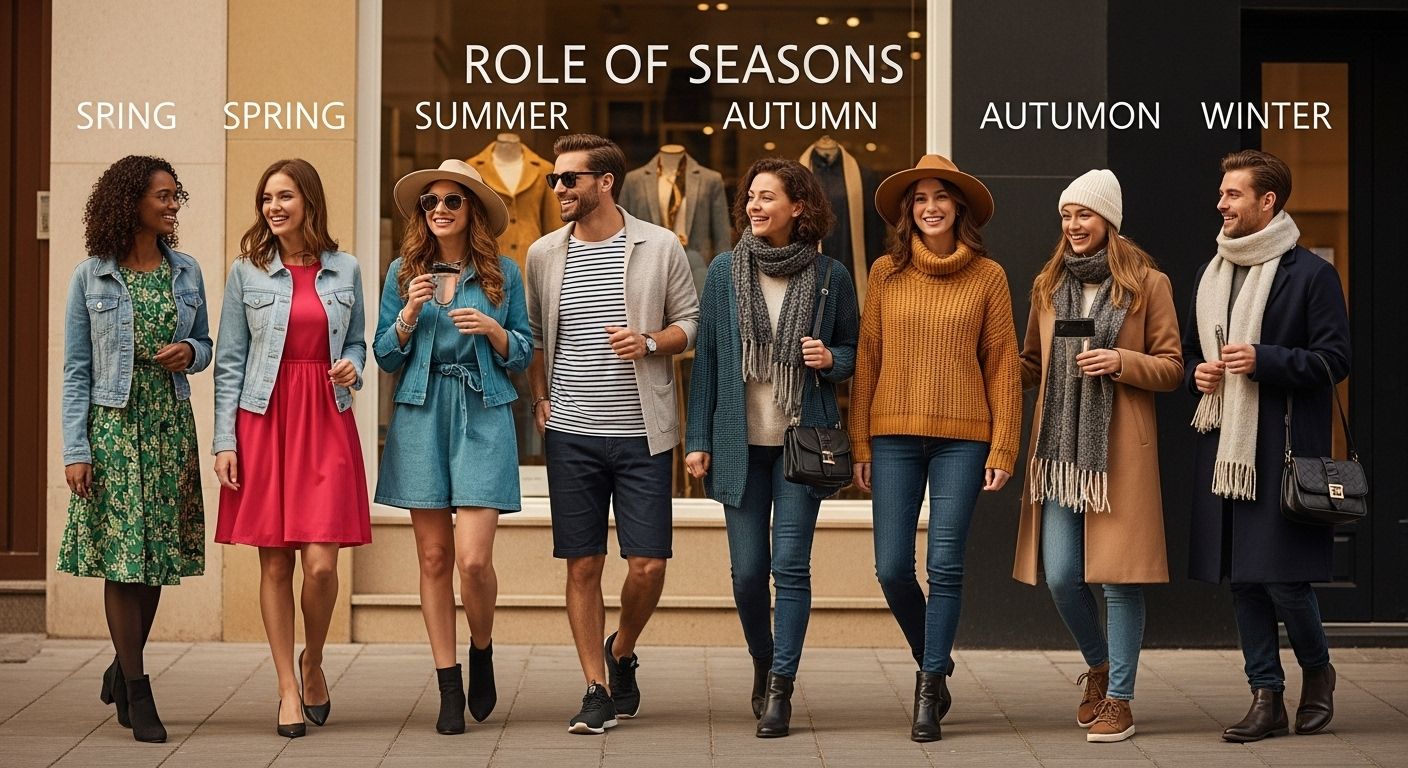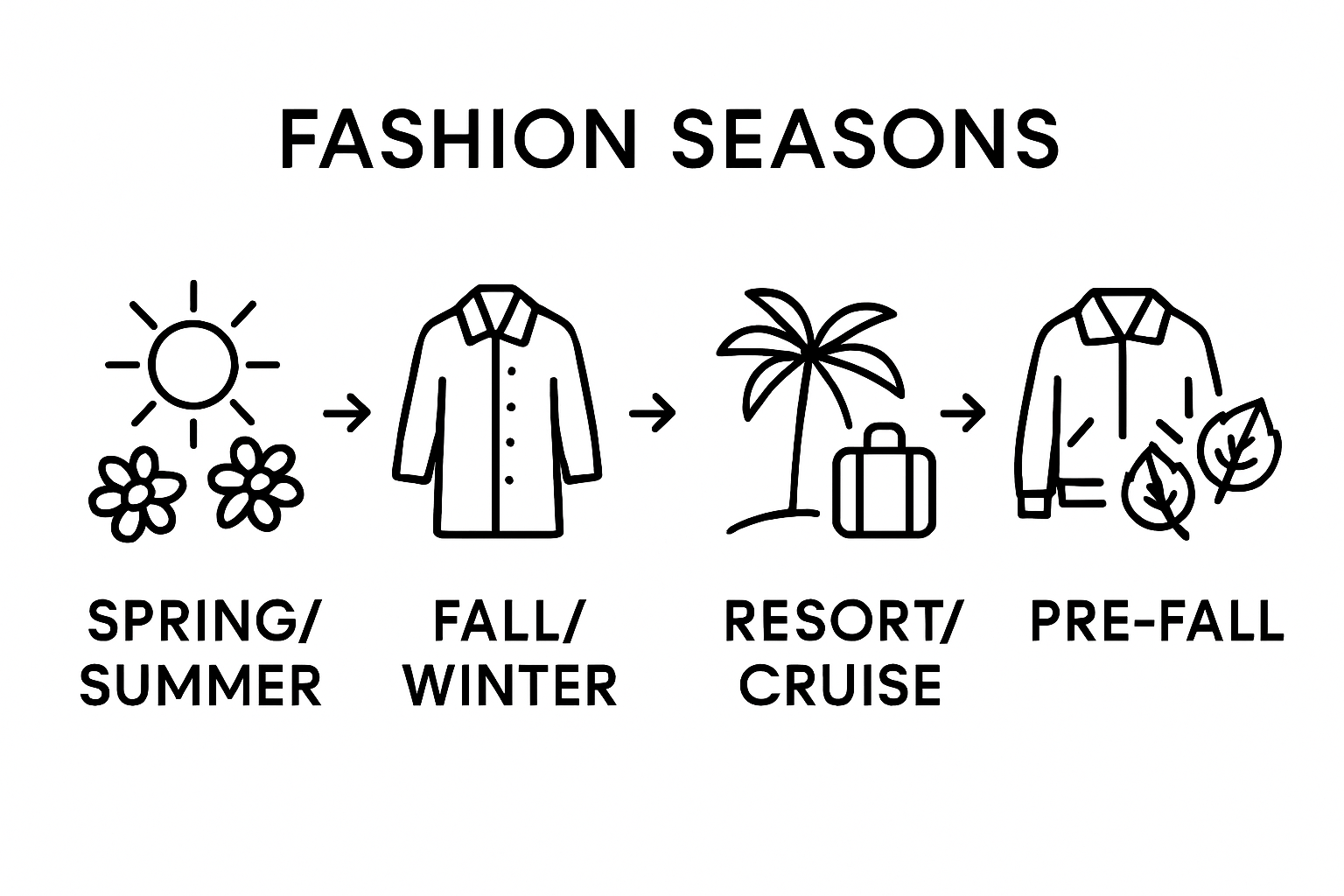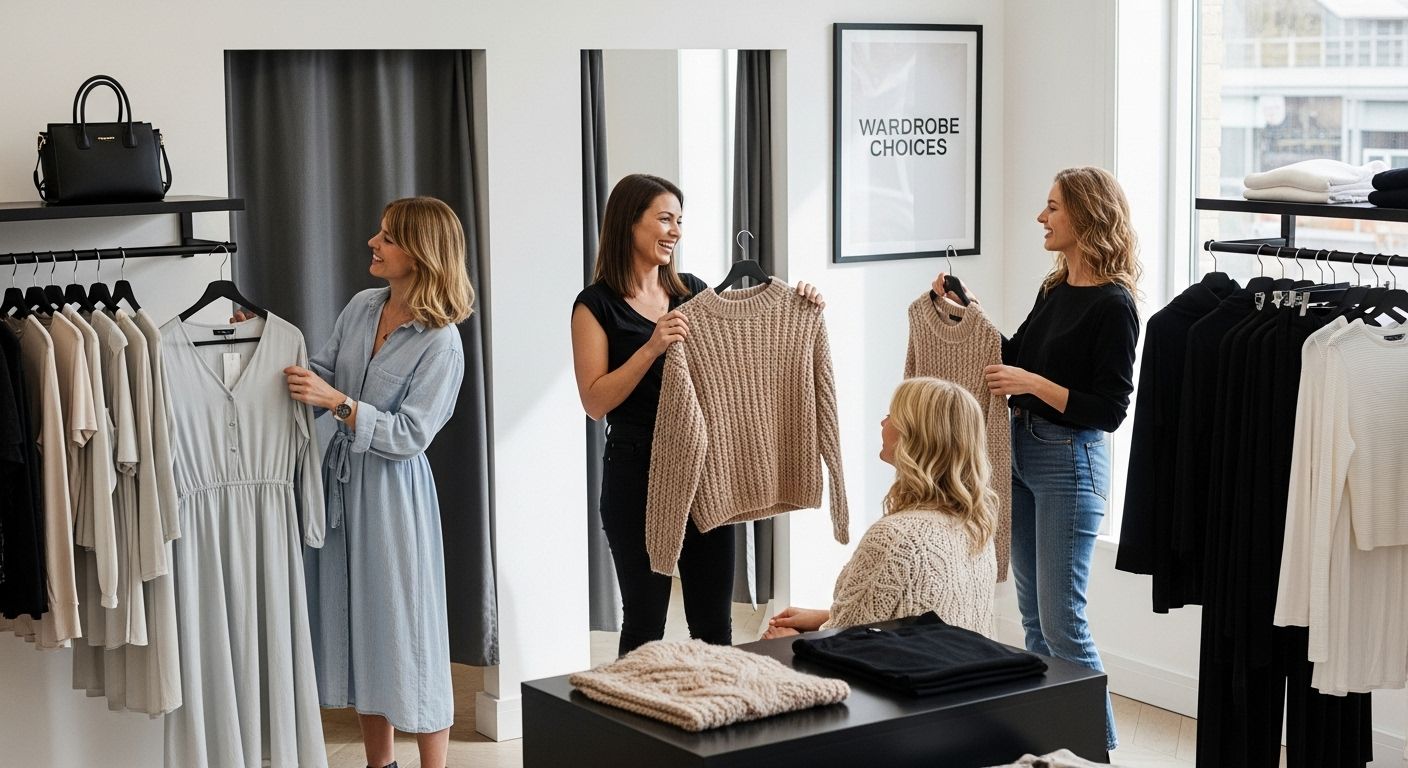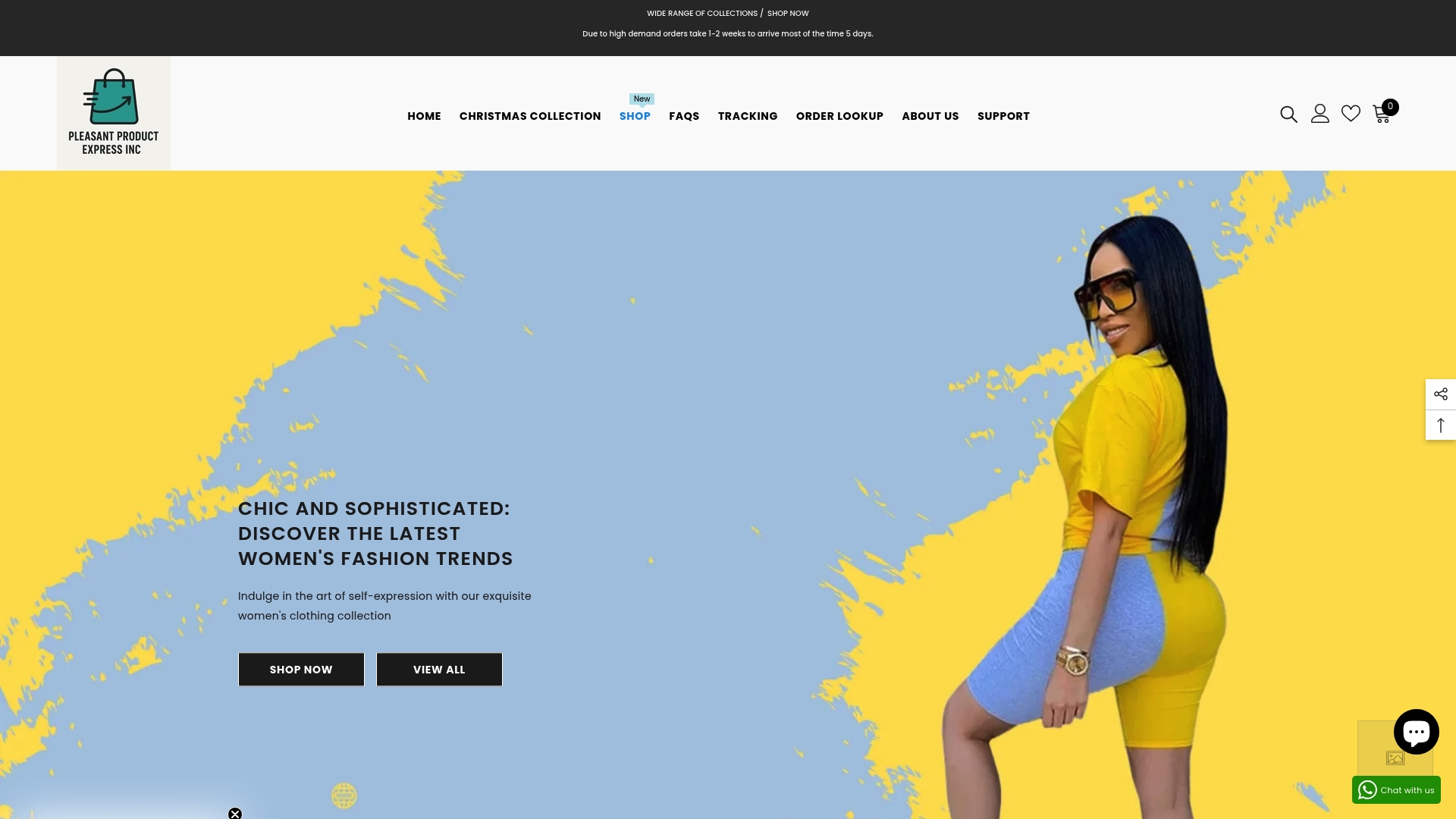Understanding the Role of Seasons in Fashion

Fashion seasons drive what fills closets every few months and they shape not just what people wear, but also how whole industries operate. Most people know about spring and fall collections, but few realize that the fashion world actually plans four main seasons every year and each has its own hidden strategy. The wild part is these fashion cycles do more than respond to the weather. They spark new trends, shift cultures, and even set off intense economic ripples around the globe.
Table of Contents
- What Are The Seasons In Fashion And Their Significance?
- The Impact Of Seasons On Fashion Trends And Designs
- Consumer Behavior And Seasonal Fashion Choices
- Cultural Influences On Seasonal Fashion Trends
- The Future Of Seasonal Fashion In A Global Context
Quick Summary
| Takeaway | Explanation |
|---|---|
| Fashion seasons influence design and consumer behavior. | Brands strategically introduce collections to align with weather and cultural trends, guiding consumer choices. |
| Psychological factors drive seasonal fashion purchases. | Emotional connections to identity, social conformity, and personal comfort shape consumer decisions during seasonal transitions. |
| Cultural context shapes seasonal fashion choices. | Each culture interprets fashion differently based on heritage, social significance, and climate, influencing wardrobe selections. |
| Technological advancements are transforming fashion design. | Digital tech, AI, and virtual platforms allow personalized, sustainable approaches to fashion creation and consumption. |
| Sustainability is becoming essential in fashion. | Designers focus on eco-friendly materials and ethical production processes to meet consumer demand for sustainable fashion solutions. |
What are the Seasons in Fashion and Their Significance?
Fashion seasons represent strategic periods when designers, brands, and retailers introduce, showcase, and sell specific clothing collections aligned with upcoming weather patterns and cultural trends. These seasons go beyond mere temperature considerations, functioning as complex cultural and economic ecosystems that shape consumer behavior and style narratives.
The Four Primary Fashion Seasons
The traditional fashion calendar encompasses four distinct seasons, each with unique characteristics and design philosophies
 :
:
- Spring/Summer (SS): Characterized by lightweight fabrics, bright colors, and breathable designs that reflect warmer temperatures.
- Fall/Winter (FW): Featuring heavier materials, deeper color palettes, and layered clothing suitable for colder environments.
- Resort/Cruise: Targeting vacation and warm-weather clothing lines, typically released between traditional seasons.
- Pre-Fall: Bridging summer and winter collections with transitional pieces that offer versatility.
Cultural and Economic Significance
Fashion seasons are not merely about clothing but represent intricate social and economic mechanisms. Research from the Social Transmission of Cultural Traits study reveals how these cycles generate realistic fashion trends through complex social interactions. Designers strategically time their collections to align with consumer expectations, market demands, and emerging style narratives.
These seasonal shifts enable brands to create anticipation, drive consumer engagement, and maintain economic momentum. For fashion enthusiasts interested in understanding more about seasonal wardrobe dynamics, exploring how these cycles operate provides fascinating insights into the fashion ecosystem.
Design and Innovation Drivers
Seasonal transitions prompt designers to continuously innovate, experiment with materials, and respond to changing global aesthetics. Each fashion season becomes an opportunity to reinterpret cultural expressions, technological advancements, and societal shifts through clothing design.
To clarify the unique features and strategic purposes of each main fashion season, the following table summarizes their characteristics, release timings, and core design philosophies.
| Fashion Season | Timing | Key Characteristics | Strategic Purpose |
|---|---|---|---|
| Spring/Summer (SS) | Early in the year | Lightweight fabrics, bright colors, breathable styles | Reflect warmer weather, spark new trends |
| Fall/Winter (FW) | Late in the year | Heavier materials, dark hues, layering | Suit colder climates, foster innovation |
| Resort/Cruise | Between major seasons | Vacation-focused, warm-weather pieces | Target travelers, maintain consumer interest |
| Pre-Fall | Before fall | Transitional, versatile items | Bridge summer and winter collections |
The Impact of Seasons on Fashion Trends and Designs
Seasons dramatically influence fashion trends, serving as powerful catalysts that transform clothing design, consumer preferences, and industry innovation. The interplay between environmental conditions, cultural expectations, and aesthetic evolution creates a dynamic landscape where fashion continuously adapts and reinvents itself.
Meteorological Influences on Design Aesthetics
Weather conditions directly shape clothing design, compelling designers to consider functionality alongside visual appeal. Winter collections emphasize warmth and layering, while summer lines prioritize breathability and lightweight materials. Research on clothing industry dynamics highlights how unpredictable weather patterns can significantly impact fashion production and consumer purchasing behaviors.
Key meteorological design considerations include:
- Temperature regulation: Creating garments that protect against environmental extremes
- Material selection: Choosing fabrics appropriate for specific seasonal conditions
- Aesthetic responsiveness: Developing designs that reflect seasonal mood and energy
Psychological and Cultural Dimensions
Fashion seasons transcend physical protection, functioning as powerful psychological and cultural expressions. Designers leverage seasonal transitions to communicate broader social narratives, reflecting contemporary emotions, aspirations, and collective experiences. For those interested in exploring the intricate world of fashion cycles, understanding these deeper connections reveals fashion as a complex social language.
Economic and Strategic Implications
Seasonal fashion trends represent sophisticated economic strategies. Brands meticulously plan collections months in advance, anticipating consumer desires and market dynamics. This forward-thinking approach allows fashion houses to create anticipation, manage inventory, and position themselves at the forefront of cultural conversations. By understanding and predicting seasonal shifts, designers transform clothing from mere functional items into powerful cultural statements that reflect humanity’s perpetual desire for renewal and self-expression.
Consumer Behavior and Seasonal Fashion Choices
Consumer fashion choices are complex psychological and social processes that extend far beyond simple clothing selection. Seasonal transitions trigger intricate decision making mechanisms influenced by personal identity, social expectations, and environmental contexts.
Psychological Motivations Behind Seasonal Purchases
Individuals approach seasonal fashion with nuanced emotional and practical considerations. Climate, social events, personal comfort, and self expression become critical drivers in wardrobe transformations. Research on consumer behavior reveals that purchasing decisions are rarely purely functional but deeply rooted in personal narrative and social positioning.
Key psychological motivations include:
- Identity expression: Using clothing to communicate personal style and emotional state
- Social conformity: Aligning with seasonal trends to feel connected
- Emotional adaptation: Using fashion as a mechanism to process seasonal changes
Social Influence and Trend Dynamics
Social networks and media platforms dramatically accelerate seasonal fashion trend adoption. Consumers increasingly rely on digital influencers, celebrity styles, and online communities to guide their seasonal wardrobe choices. For fashion enthusiasts seeking deeper insights into seasonal wardrobe strategies, understanding these complex social dynamics becomes crucial.
Economic and Personal Investment Strategies
Seasonal fashion choices represent significant personal economic investments. Consumers strategically balance budget constraints with desire for novelty, often developing sophisticated approaches to wardrobe management. Some prioritize versatile pieces that transition across seasons, while others invest in statement items that refresh their personal aesthetic. This nuanced approach transforms seasonal shopping from mere consumption into a personalized form of self curation and economic strategy.
This table provides an overview of the major cultural, psychological, and economic factors influencing consumer fashion decisions during seasonal shifts, consolidating the article’s discussion on behavioral motivations.
| Influence Category | Key Drivers | Example Impact on Seasonal Fashion Choices |
|---|---|---|
| Psychological | Identity, emotion, comfort | Express personality, adjust to seasonal mood |
| Social | Trend conformity, media influence, peer dynamics | Purchase trendy items seen on social platforms |
| Economic | Budgeting, investment in versatile or statement pieces | Choose multi-seasonal basics or refresh with new styles |
| Cultural | Tradition, regional climate, religious observance | Adapt wardrobe for holidays, ceremonies, or climate needs |

Cultural Influences on Seasonal Fashion Trends
Fashion serves as a powerful lens through which cultural identities, historical narratives, and societal transformations are expressed. Seasonal fashion trends emerge not merely as aesthetic choices but as complex dialogues between tradition, innovation, and collective human experience.
Global Cultural Diversity in Fashion Expression
Each culture interprets seasonal fashion through its unique historical and social prism. Traditional clothing practices, religious observances, and regional climate conditions fundamentally shape how communities conceptualize and adapt seasonal wardrobes. Research examining cultural fashion consumption demonstrates how deeply embedded cultural contexts are in fashion selection processes.
Key cultural fashion considerations include:
- Regional heritage: Incorporating traditional textile techniques and design elements
- Religious significance: Adapting seasonal clothing to accommodate spiritual practices
- Climate adaptation: Developing region specific fashion solutions
Symbolic Meanings and Social Communication
Seasonal fashion transcends physical protection, functioning as a nuanced language of social communication. Different cultures imbue seasonal clothing with profound symbolic meanings, using fashion as a mechanism to signal social status, community membership, and personal identity. For those seeking deeper exploration of fashion cycle dynamics, understanding these cultural narratives becomes essential.
Globalization and Cultural Fashion Hybridization
Contemporary fashion increasingly represents a dynamic fusion of global influences. Digital connectivity and international cultural exchanges enable rapid transmission of fashion ideas, creating hybrid styles that blur traditional cultural boundaries. Designers and consumers alike participate in a complex ecosystem where seasonal trends emerge through intricate cross cultural dialogues, transforming fashion into a powerful medium of global understanding and creative expression.
The Future of Seasonal Fashion in a Global Context
The landscape of seasonal fashion stands on the brink of transformative technological and sustainable innovations, reshaping how designers, consumers, and industries conceptualize clothing production and consumption. Emerging technologies and global consciousness are redefining traditional seasonal fashion paradigms.
Technological Disruption in Fashion Design
Emergent digital technologies are revolutionizing seasonal fashion creation and experience. Research on Generative Artificial Intelligence suggests that AI and virtual platforms will fundamentally alter design processes, enabling unprecedented personalization and rapid trend adaptation. Digital platforms now allow consumers to visualize and customize seasonal wardrobes before physical production, reducing waste and enhancing individual expression.
Key technological fashion transformations include:
- Virtual prototyping: Creating digital clothing models before physical manufacturing
- Personalized design algorithms: Generating unique seasonal styles based on individual preferences
- Immersive fashion experiences: Exploring clothing through augmented and virtual reality platforms
Sustainability and Ethical Seasonal Strategies
Environmental consciousness is driving radical reimagination of seasonal fashion production. Designers increasingly prioritize sustainable materials, circular economy principles, and ethical manufacturing processes. For fashion enthusiasts interested in exploring innovative wardrobe strategies, understanding these emerging sustainable approaches becomes critical.
Global Interconnectedness and Cultural Fusion
The future of seasonal fashion represents a dynamic, borderless ecosystem where cultural boundaries dissolve. Digital connectivity enables instantaneous global trend transmission, creating hybrid styles that transcend traditional geographical limitations. Designers and consumers collectively participate in a worldwide creative dialogue, transforming seasonal fashion from a localized phenomenon into a global, collaborative art form that celebrates human diversity and shared creativity.
Make Seasonal Wardrobe Changes Effortless with Pleasant Product Express
Feeling overwhelmed by constant wardrobe updates and the pressure to adapt with each new fashion season? As highlighted in “Understanding the Role of Seasons in Fashion,” shifting temperatures and trend cycles can impact not only what you wear but also how you feel and express your unique style. Finding versatile, affordable pieces that fit each season’s demands, while staying true to your identity, is a real challenge.

At Pleasant Product Express, we turn seasonal challenges into an enjoyable shopping experience. Explore our wide variety of men’s, women’s, and baby clothing that makes seasonal transitions seamless and affordable. Discover practical solutions that keep you comfortable and stylish year-round without the stress of searching everywhere for the right fit. Ready to refresh your look and simplify your life? Shop now at Pleasant Product Express and start building a wardrobe that works for every season.
Frequently Asked Questions
What are the main fashion seasons?
The main fashion seasons include Spring/Summer, Fall/Winter, Resort/Cruise, and Pre-Fall. Each season represents unique characteristics and design philosophies that cater to varying weather conditions and cultural trends.
How do weather conditions influence fashion design?
Weather conditions directly impact fashion design by determining essential factors such as material selection and garment functionality. For instance, winter collections focus on warmth and layering, while summer designs prioritize lightweight and breathable fabrics.
How do seasonal changes affect consumer behavior in fashion purchases?
Seasonal changes influence consumer behavior by altering psychological motivations for purchases. People often seek to align their wardrobe with seasonal trends, express personal identity, and adapt to social expectations, which leads to more strategic shopping during transitional periods.
What role does culture play in seasonal fashion trends?
Culture significantly shapes seasonal fashion trends by dictating traditional clothing practices, regional heritage, and religious observances. Each culture interprets fashion based on its historical and social context, creating a diverse array of expressions tied to seasonal wardrobes.







